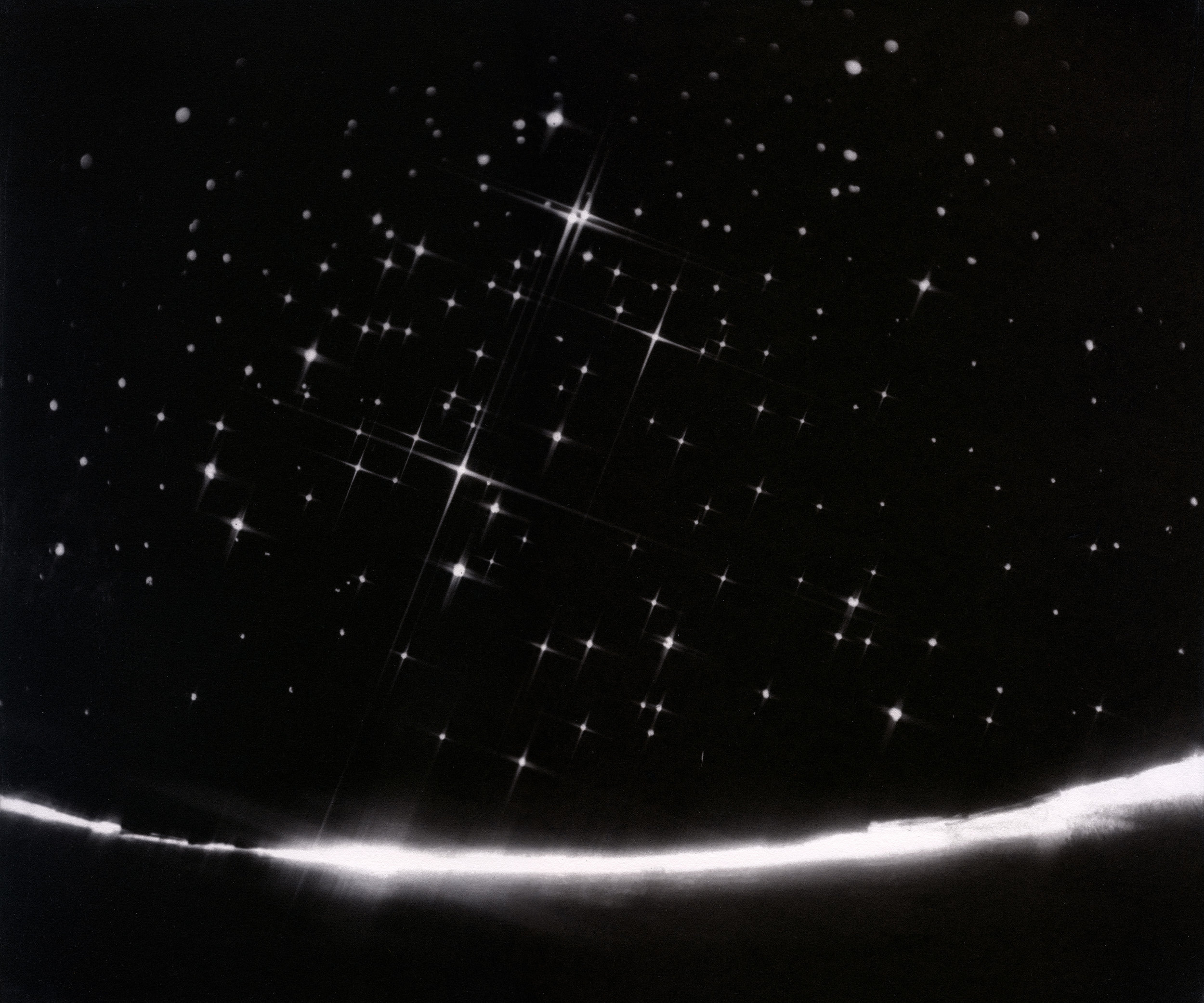

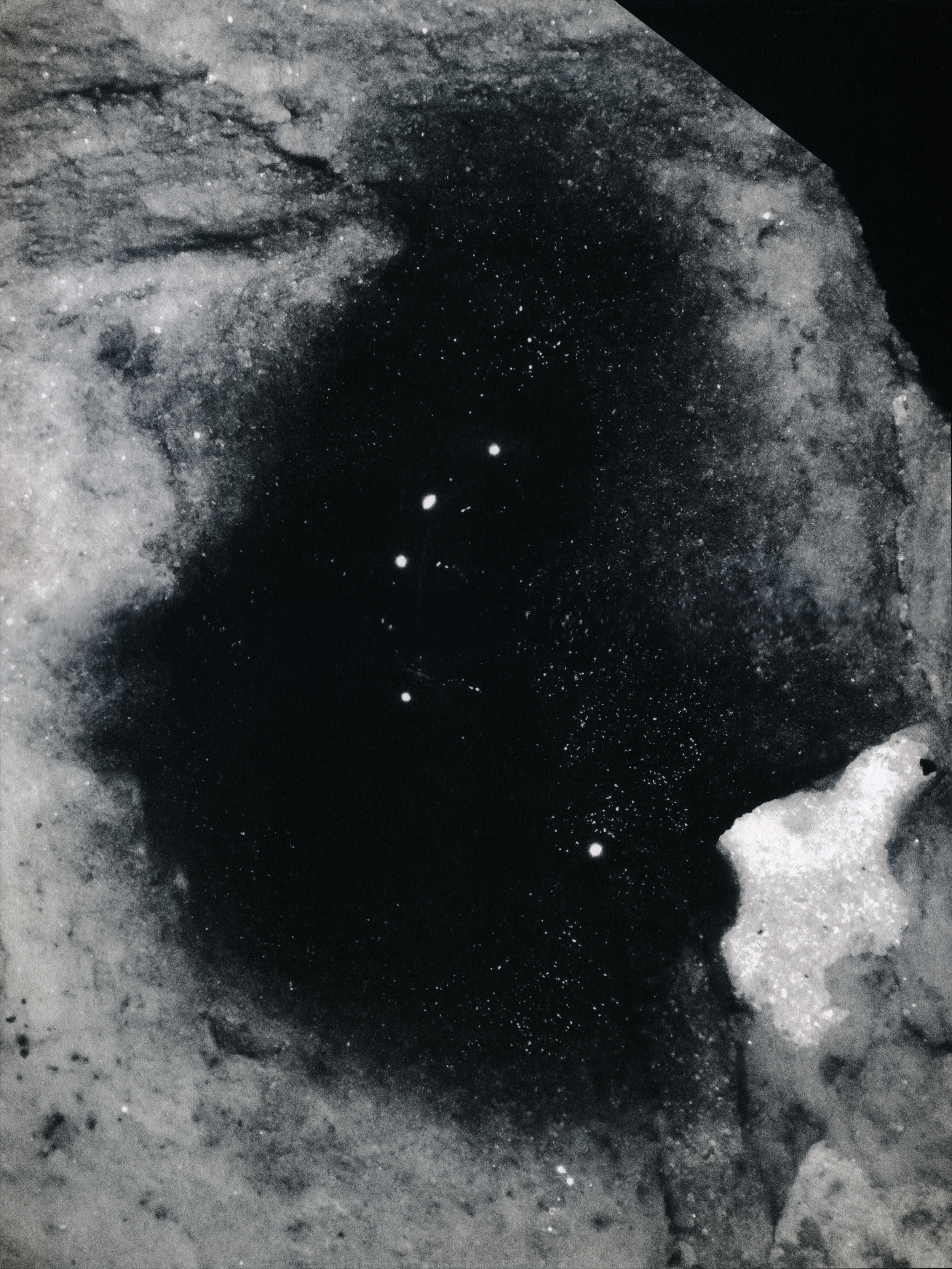
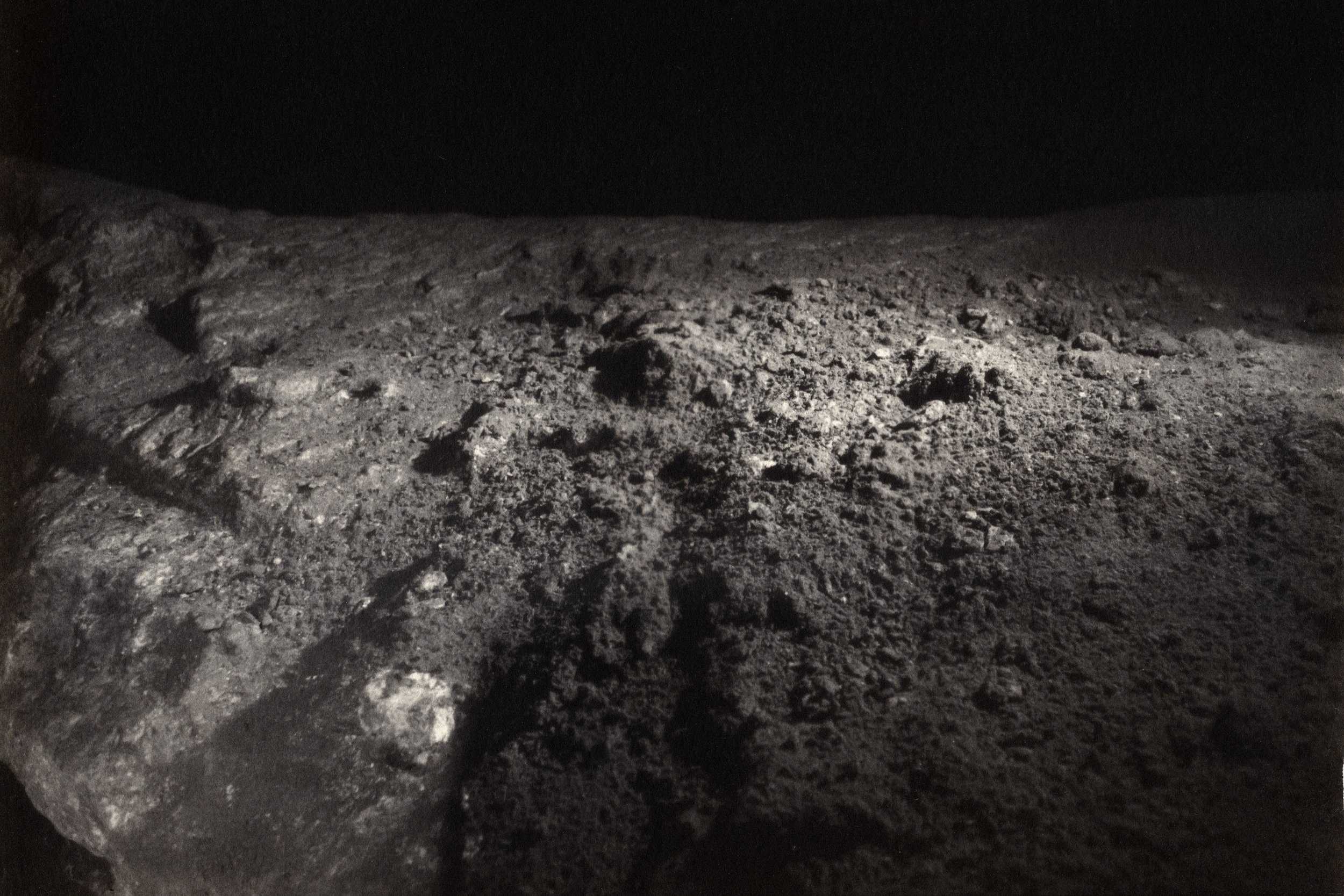
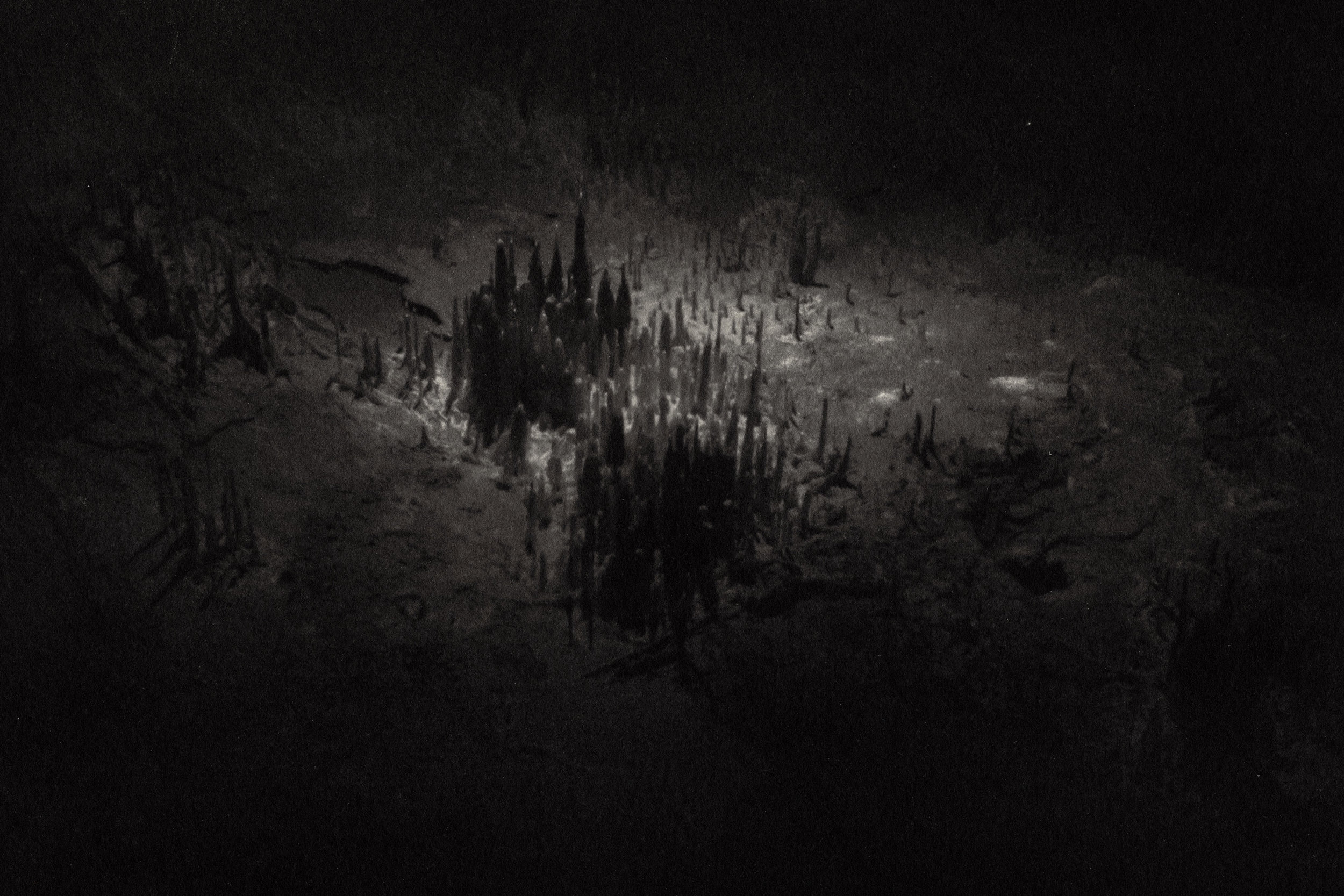
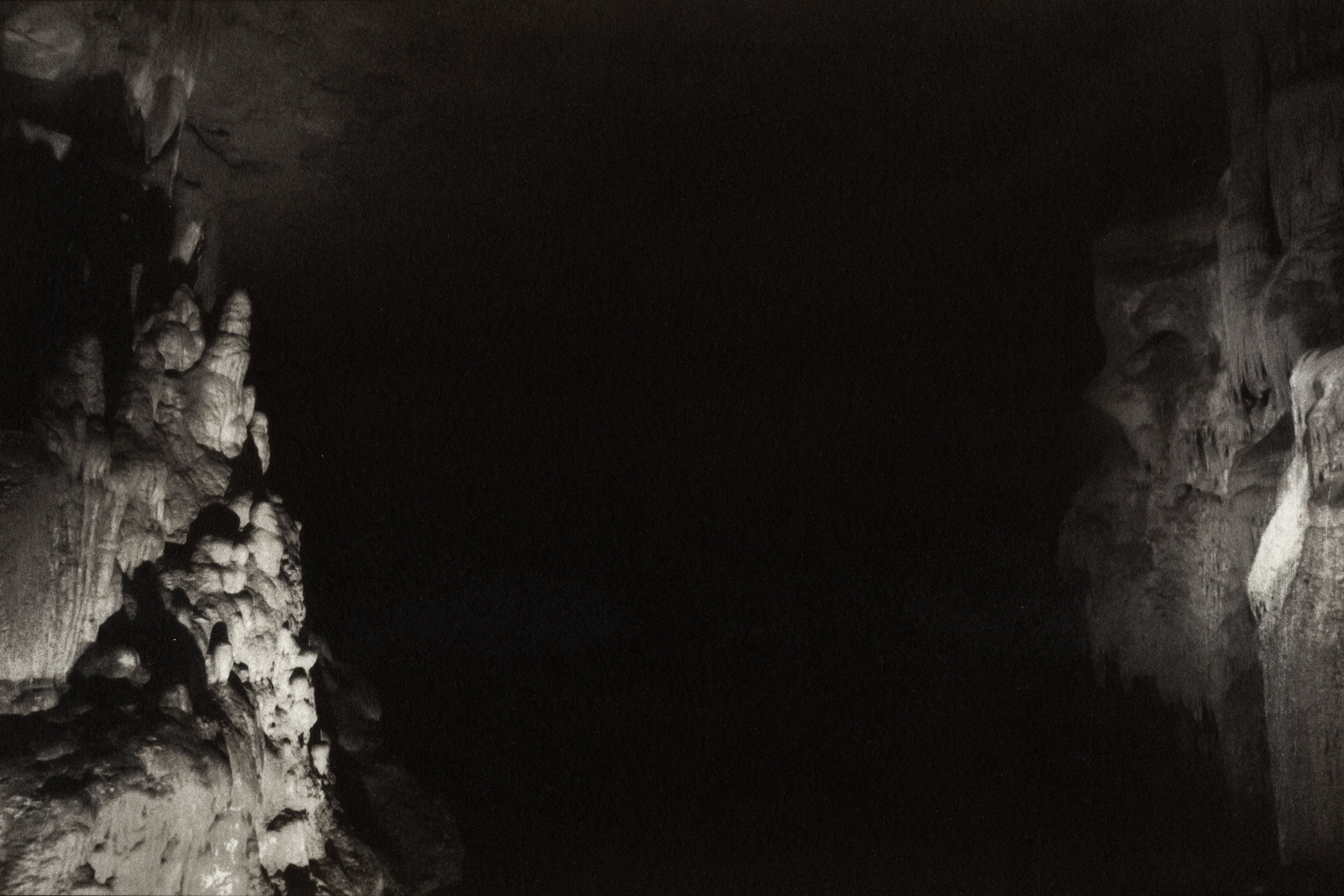
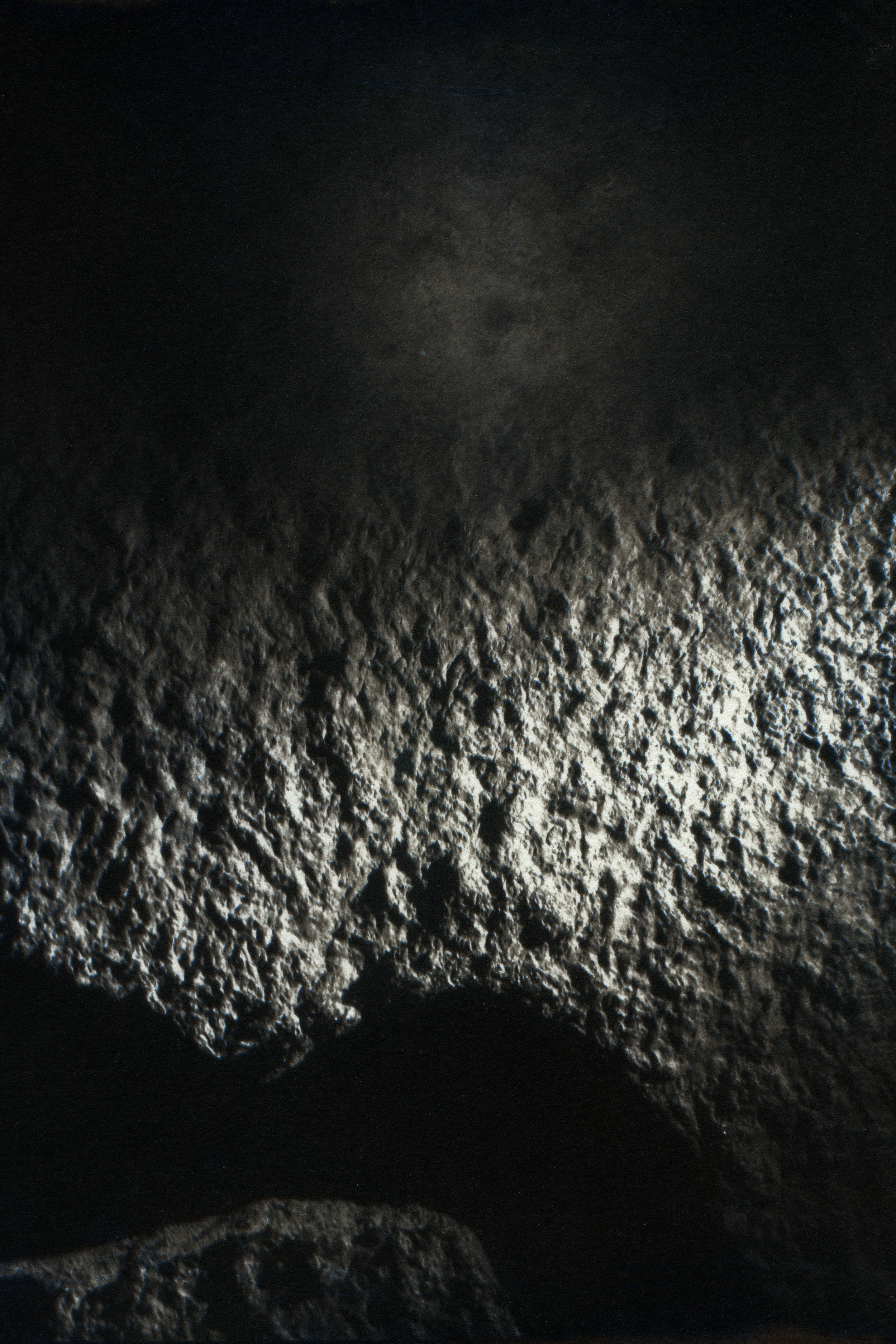

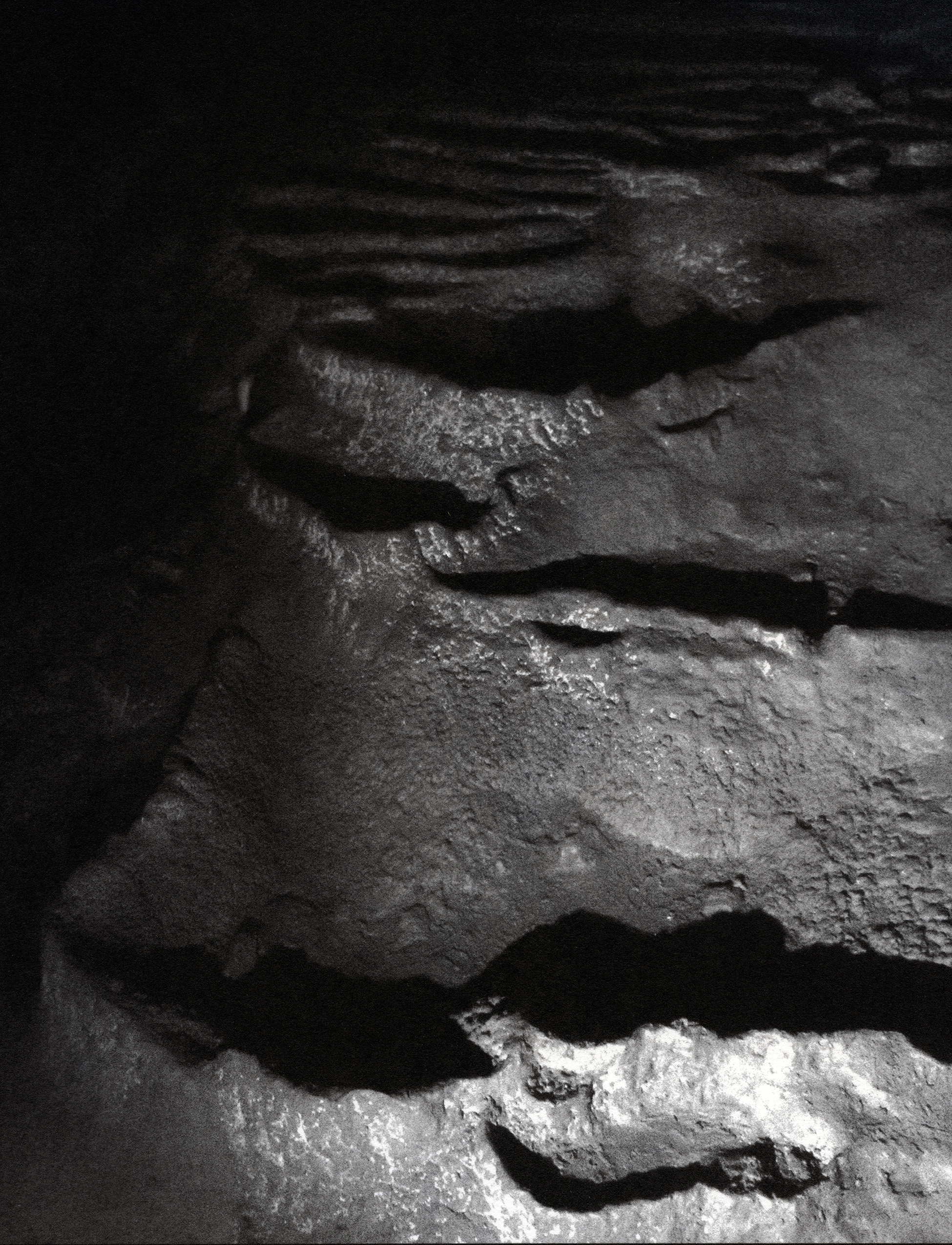
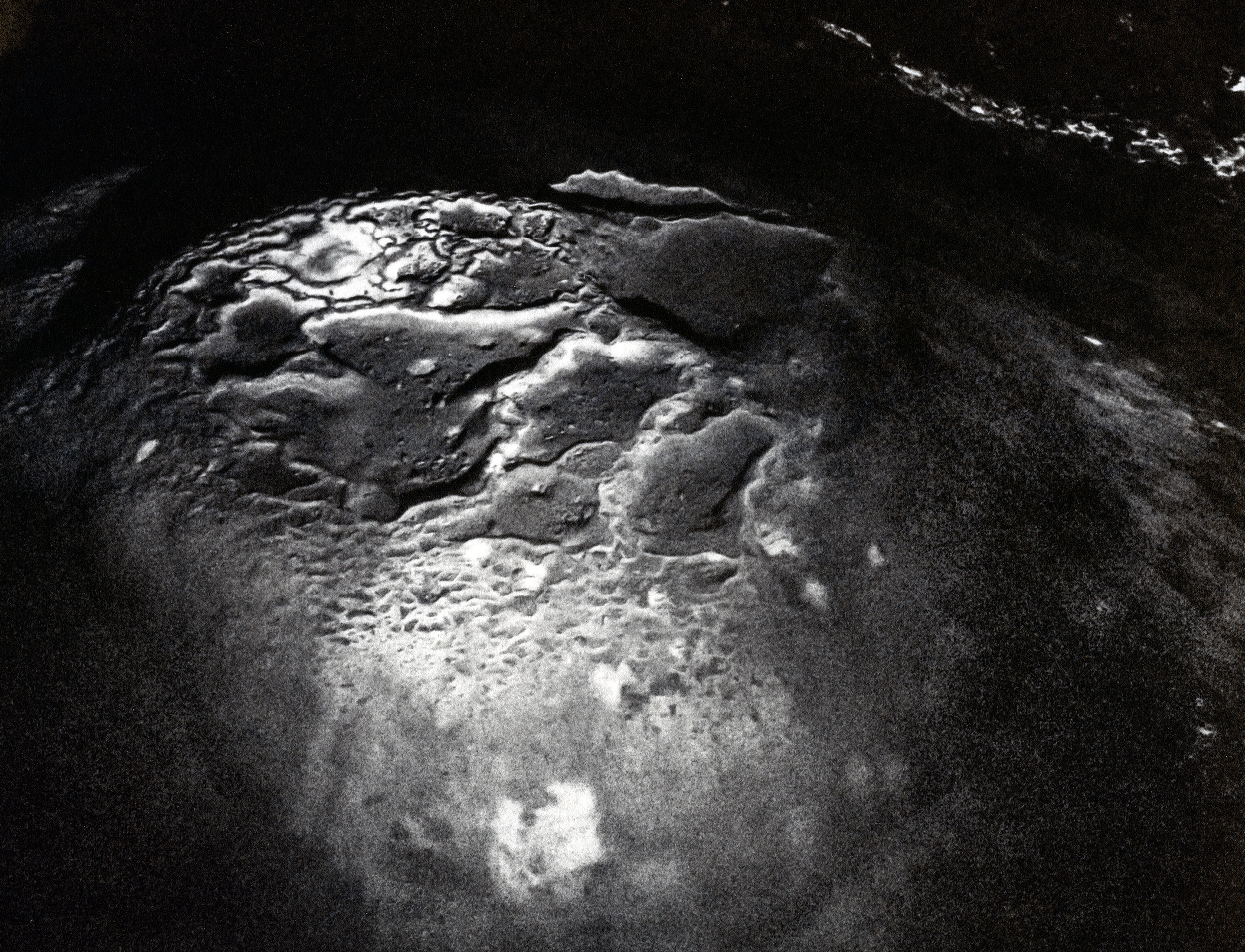
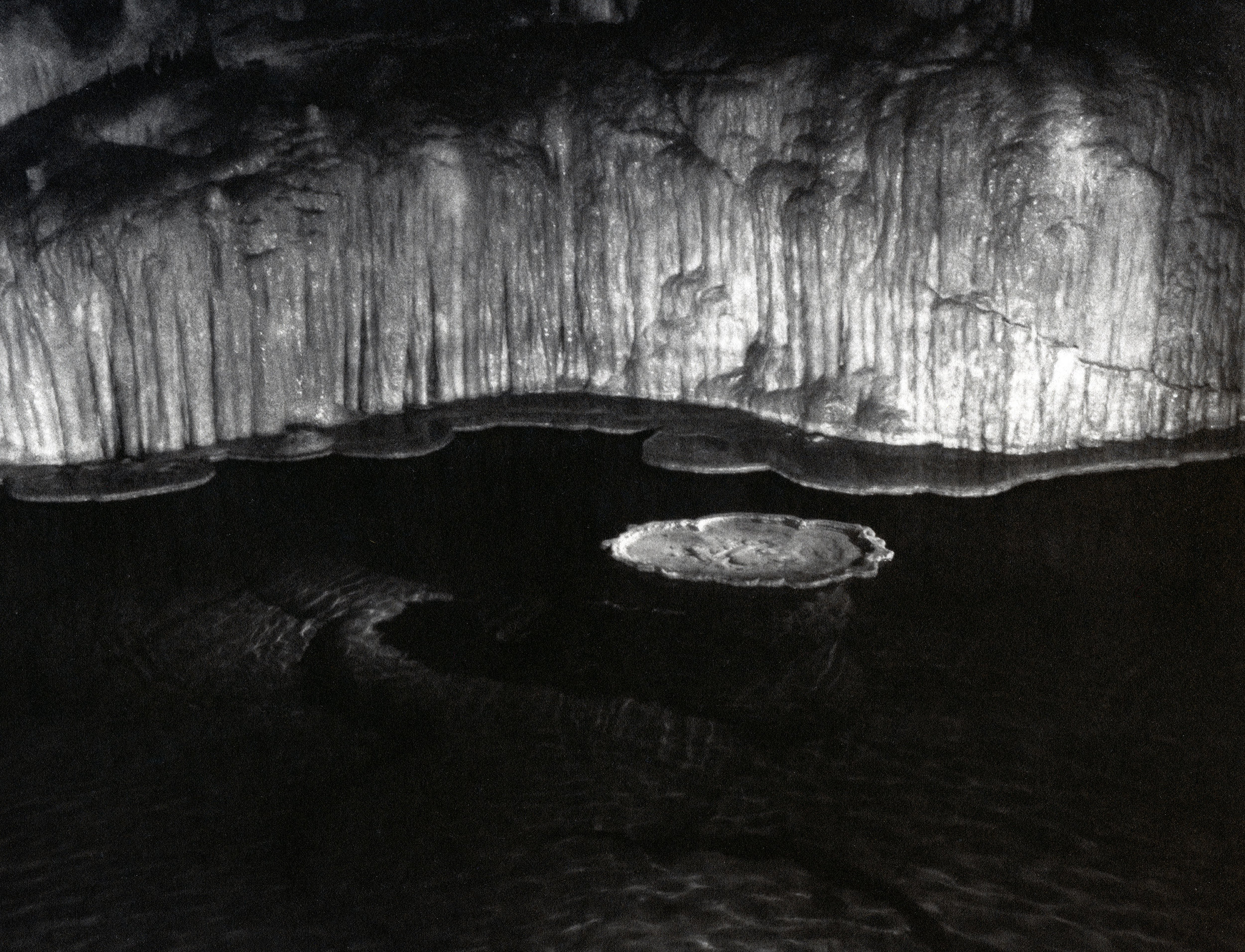
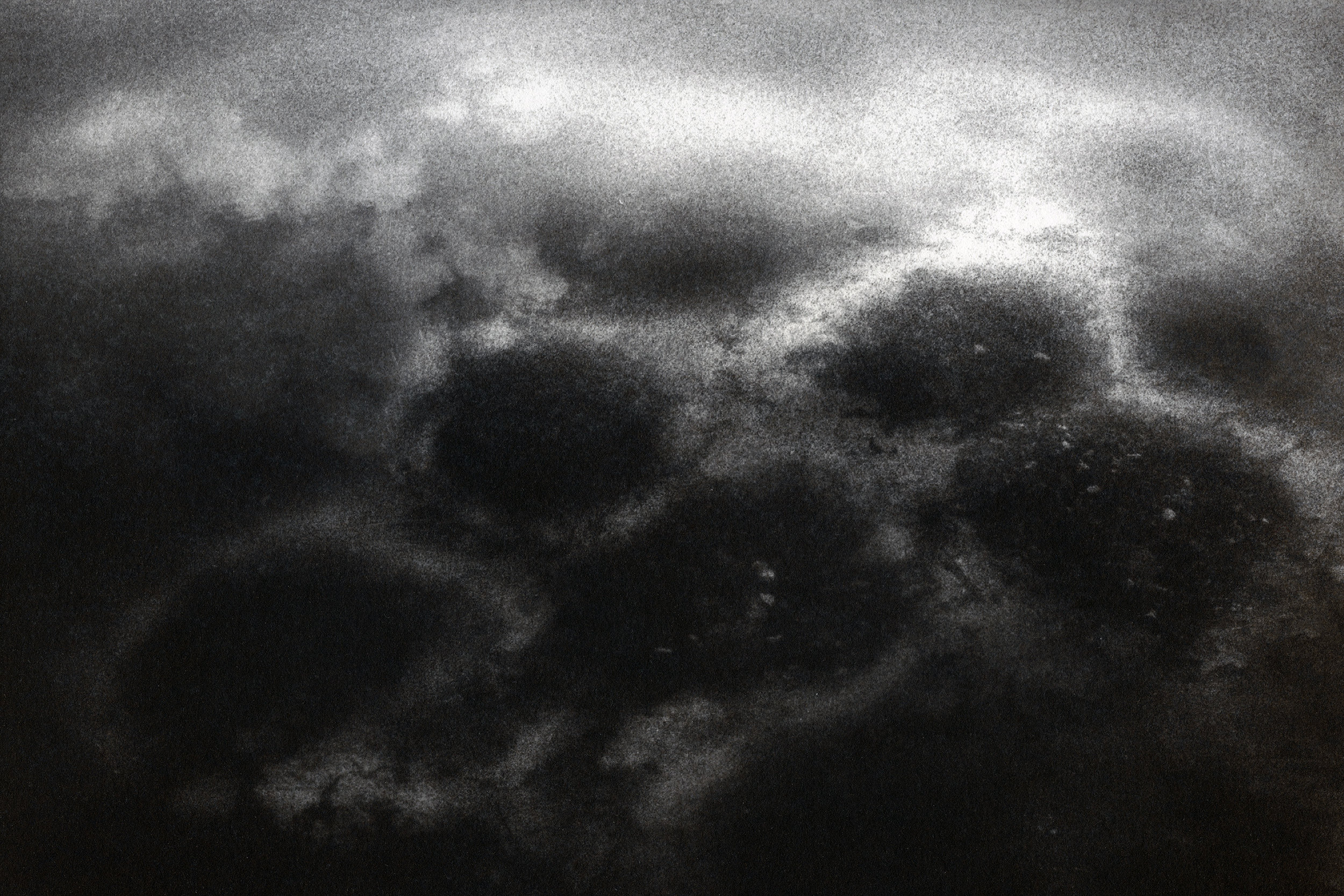
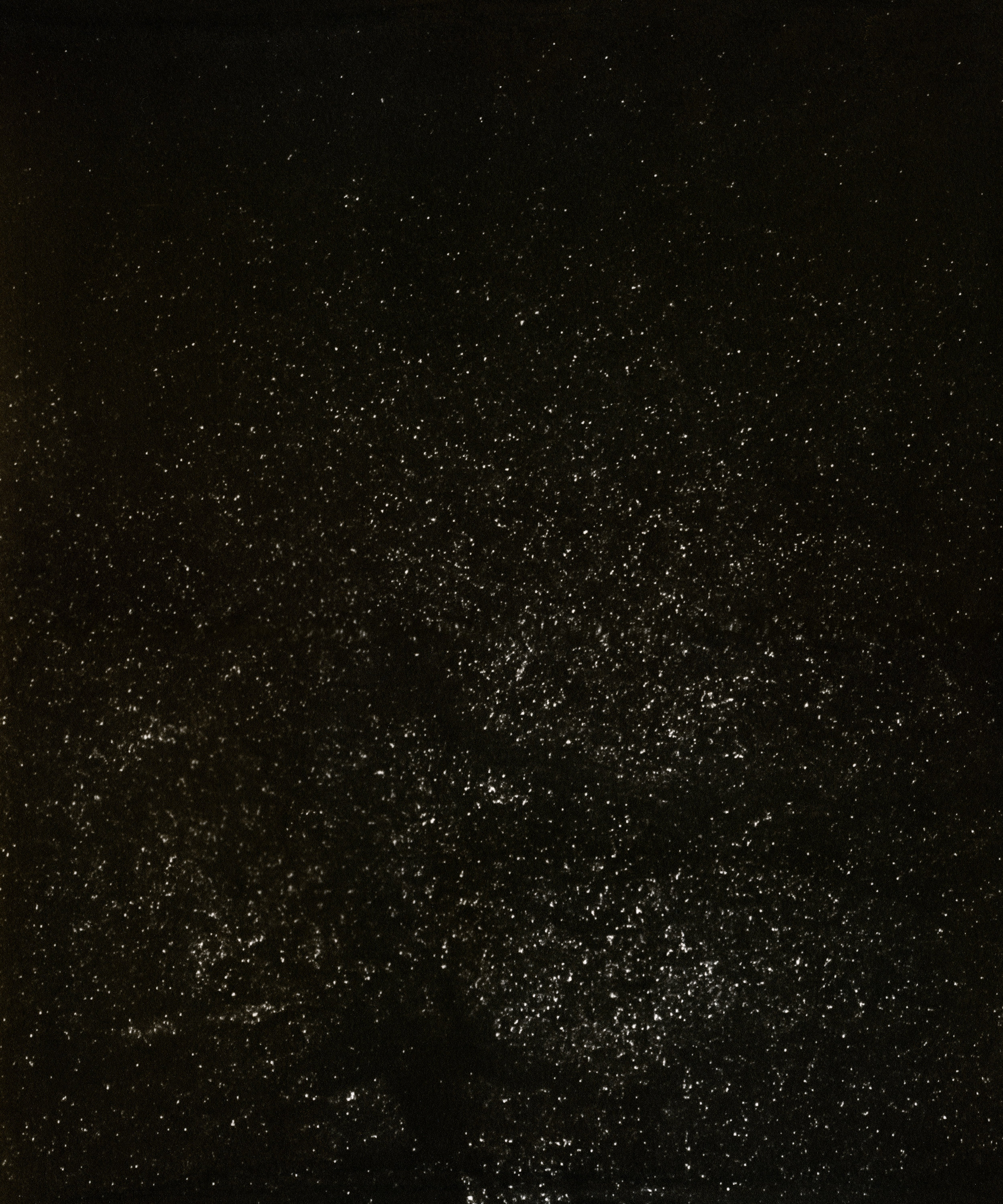
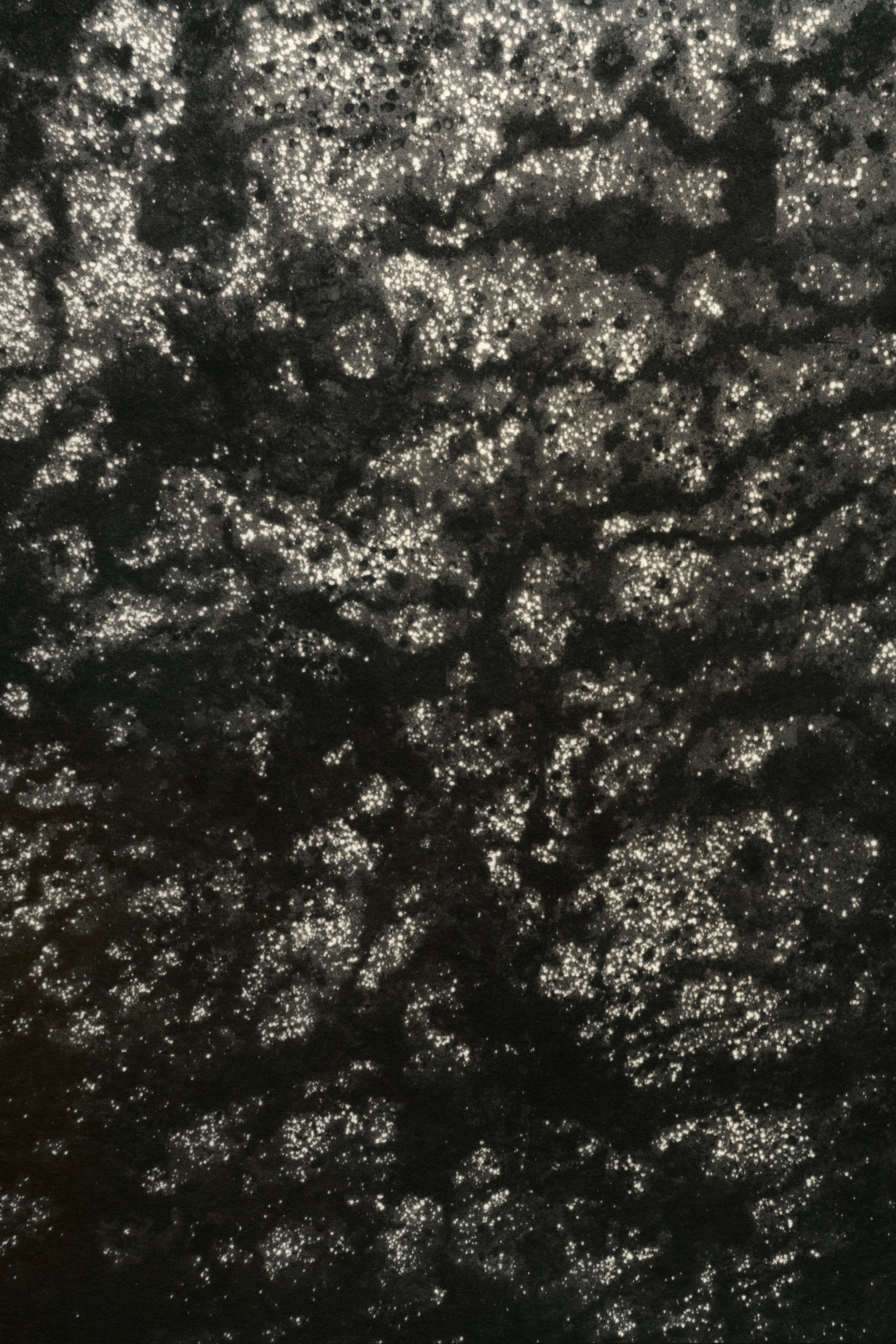
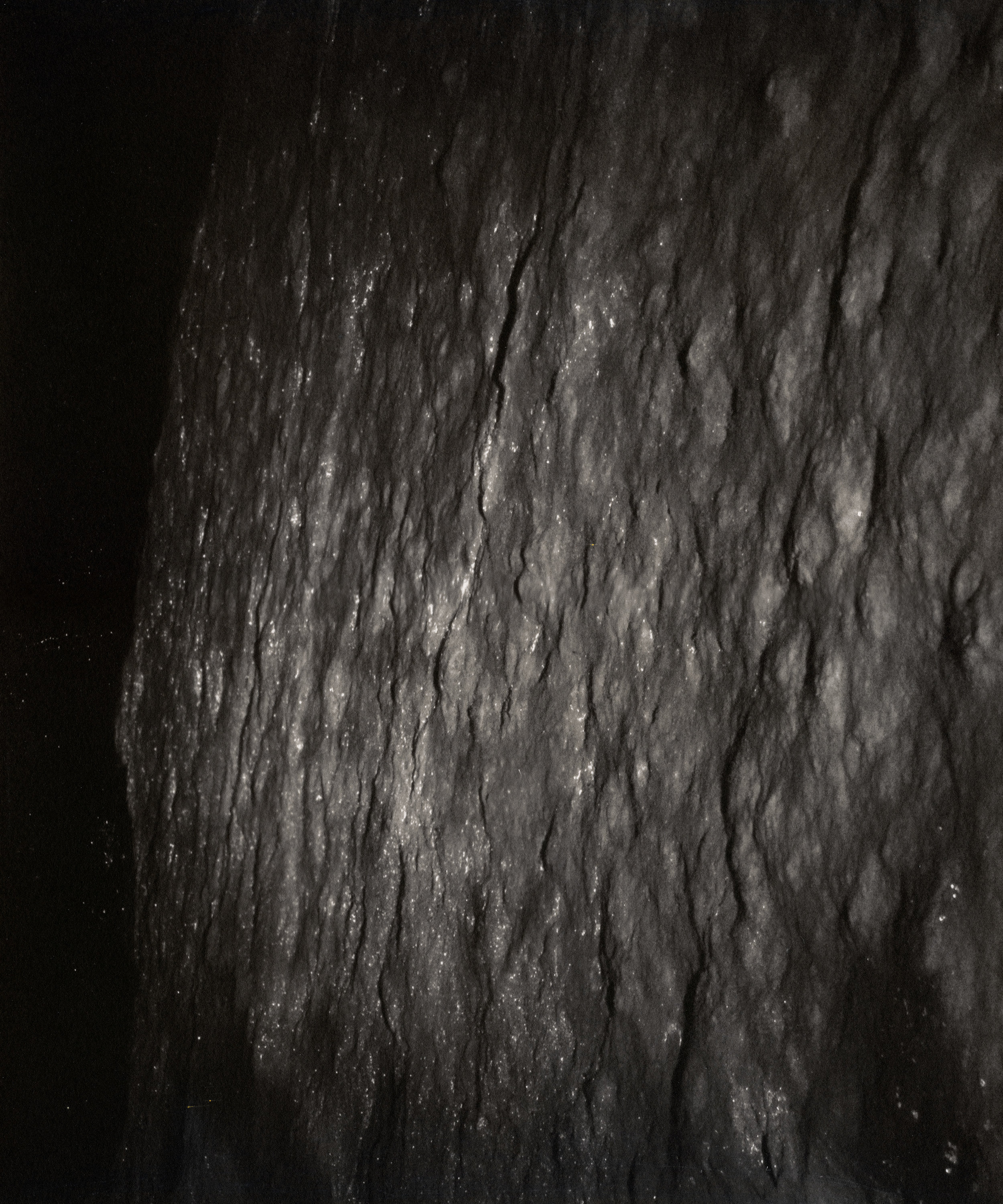
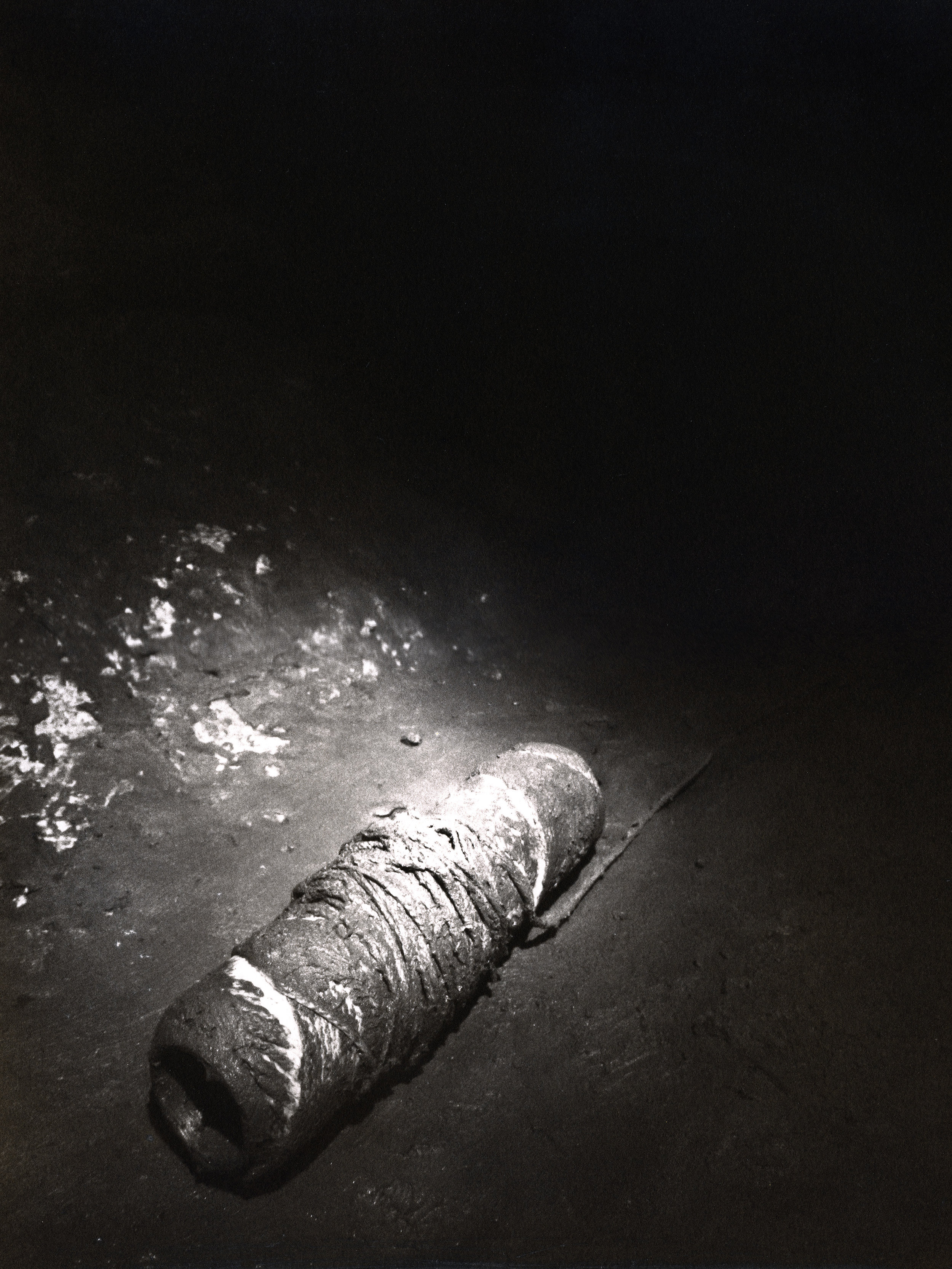
At the Edge of the Known
This project examines the human urge to explore, to see what lies beyond the horizon, to push out into the universe and expand our field of vision. Although the images look like outer space, most were made on caving expeditions with Lyon’s COBRA Grotto. This project makes connections between cave and cosmos, outer space and inner space, science and fiction.
Exploring a cave always makes me feel a bit like an astronaut. Surrounded by deep blackness, only able to see as much as my headlamp illuminates, I might as well be on the surface of the moon. I also find myself suddenly conscious of gravity, concentrating on my center of gravity so I don’t fall. Time seems to move differently. My photographs reflect the sense of spatial and temporal disorientation one might experience in a cave or on a spacewalk in zero-g. I deliberately chose perspectives that deny the viewer a comfortable psychological “place to be” in the photo, replicating the aerial perspective of a satellite or the point of view of a telescope pointed at the stars.
I was also inspired by the research of my colleague Dave Thomas, who studies how organisms adapt to extreme environments (such as caves) in order to gain insight into how life might exist elsewhere in the universe. My approach to photography is similar. I don’t just take photographs to document what the cave literally looks like, I’m always conscious of how a viewer’s imagination might bring something else to the photograph. A cluster of stalagmites becomes an alien city on a distant planet. Water droplets on the ceiling of a cave becomes a constellation of stars. Exploration is always preceded by this sort of anticipatory imagination—trying to predict what the terra incognita looks like before we can actually get there.
In the early days of photography in the 19th century, astrophotography was extremely limited, if not impossible. These prints are “Ziatypes,” made with a hand-coated lithium/palladium-based emulsion that references historic techniques like platinum/palladium printing. By evoking the history of astrophotography and early (relatively low-tech) attempts to capture images of the cosmos, I encourage viewers to entertain the romantic notion that there are still new, unseen worlds just beyond view of even our most high-tech imaging technology.